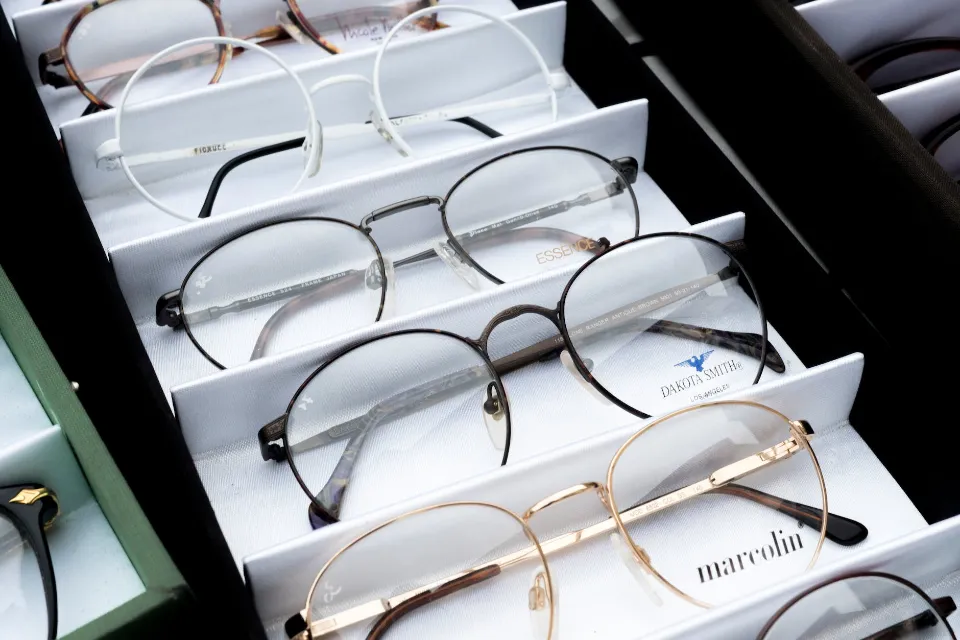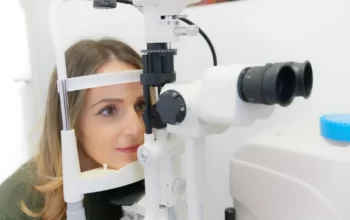
There is a wide range of eyesight variations. Although nearsightedness is the most common diagnosis, there are many different degrees of it and numerous treatments depending on the severity.
Yes, it is possible to have nearsightedness and farsightedness at the same time, despite the rarity. Corrective lenses can be used to treat both nearsightedness and farsightedness.
Whatever your eye care requirements, Maine Optometry is committed to helping you find a solution that fits your needs, goals, and way of life.
Nearsightedness

The vision condition known as nearsightedness, also known as myopia, causes objects close to you to appear clearly while blurry and out of focus objects farther away. More than one-third of people worldwide, according to scientists, have myopia. Myopia is a condition where light rays are bent incorrectly by the shape of your eye, focusing images in front of your retina rather than on it. Nearsightedness can develop slowly or quickly, usually getting worse during childhood and adolescence. Myopia is on the rise in the modern world because electronic devices are used almost constantly. When it comes to prolonged screen use, blue-light-filtering glasses might be able to delay the onset of myopia. Typically, nearsightedness runs in families. An eye exam is the most accurate way to diagnose myopia but symptoms usually include:
- Blurry vision when looking at distant objects
- Squirting or partially closing eyelids to see clearly
- Eyestrain-induced headaches
- Difficulty seeing while driving at night
It’s probably time for a new prescription if you are still experiencing blurry vision despite wearing prescription eyeglasses or contacts. The best way to keep up with myopia management is to have regular eye exams.
Farsighted
In contrast to myopia, which affects 5 to 10% of Americans, farsightedness or hyperopia is much less common. When you have hyperopia, nearby objects are hazy but faraway objects are distinct. Normal birthtime prevalence of farsightedness. Hyperopia may manifest as general eye discomfort or a headache after performing close-up tasks like computer work or drawing. Hyperopia can be treated with surgery, prescription eyeglasses, or contacts. The best way to identify hyperopia is through an eye exam.
Is It Possible to Be Both?
Is it possible to have both near- and farsightedness? Yes, it is possible to be both nearsighted and farsighted, despite the rarity. Anisotropia describes a condition in which a person has nearsightedness in one eye and farsightedness in the other. Your two eyes’ significant refractive differences cause anisometropia, which affects vision. Antimetropia is a condition where one eye is nearsighted and the other is farsighted. With the aid of a combination of convex and concave lenses, anisometropia can now be treated thanks to quickly developing optometry technology. Another well-liked treatment for anisometropia is surgery. To have your eyes examined, make an appointment with a local optometrist today. Early detection is essential for treating any of the aforementioned conditions.
Is Astigmatism Related to Eyesight?
An error in the shape of the eye can also result in astigmatism, another common vision issue.
Astigmatism is characterized by either an irregular corneal or lens curvature. The irregular curve alters how light is refracted into the retina, creating distortions similar to nearsightedness and farsightedness. Once the brain has interpreted this data from the ocular nerve, the images you see become hazy.
In contrast to nearsightedness and farsightedness, astigmatism does not cause blurry vision at a particular distance. Instead, astigmatism can contribute to a more widespread vision problem.
Astigmatism can result from eye injuries or surgeries, unlike myopia and hyperopia.
Is There Such a Thing as “Normal” Vision?

There is no such thing as “normal” vision. Every person has unique genetic, behavioral, and lifestyle factors that influence how well they can see at any given time. Based on the same factors, your own vision may also change throughout the day.
20/20 vision, which is typically measured using a visual acuity test, is the standard used to evaluate vision in clinical settings. This indicates that 20 feet away, you can see clearly what 20 feet away, healthy eyes can see.
If you have 20/50 vision, for instance, it means that you must be 20 feet away from an object that someone with “normal vision” can see from 50 feet.
As the eye does not typically correct its shape on its own, conditions like nearsightedness and farsightedness typically require correction with glasses, contacts, or laser eye surgery. While nearsightedness, farsightedness, and astigmatism are physically corrected by laser eye surgery, glasses and contacts aid in the eye’s proper light refraction.
How Are These Conditions Diagnosed?
Visit an eye care specialist if you frequently experience blurry vision.
Nearsightedness
Testing for visual acuity can be used to identify nearsightedness. You must read letters from a chart while standing at a particular distance in these tests.
If you are diagnosed, additional testing will be necessary to determine your prescription for treatment.
Farsightedness
As was already mentioned, it can be challenging to identify mild to low levels of farsightedness.
With a refraction assessment and an eye health examination, which may involve dilation of the pupils, the majority of cases can be identified.
Astigmatism
Tests for visual acuity, refraction, and keratometry can all be used to identify astigmatism.
Are There Treatments for These Visual Impairments?

You might be able to carry out daily tasks without receiving treatment, depending on the severity of your condition.
Having said that, make sure you’re safe to engage in activities like operating heavy machinery or driving a car while having vision impairment by consulting a healthcare professional. With visual impairments, these activities can be risky, and you might not even be aware of the eye fatigue and headaches you’re having as a result of your mild symptoms.
The majority of nearsightedness, farsightedness, and astigmatism cases need to be treated by a doctor with contacts, glasses, or surgery.
It is advantageous to receive treatment with glasses if you have moderate nearsightedness, farsightedness, or astigmatism. How frequently your vision needs to be corrected can be managed with glasses. You might want to think about having laser eye surgery if the condition is more severe.
The Takeaway

Being able to see objects up close is known as being nearsighted, and being properly able to see objects in the distance is known as being farsighted. Nearsightedness and farsightedness may be exacerbated or prevented by astigmatism, which can also be present on its own in your eye.
If you suspect that you have vision issues, schedule a professional evaluation with an ophthalmologist or optometrist. With glasses, contacts, or surgery, they ought to be able to alleviate your symptoms.
Protect your eyes from the environment, eat wholesome foods, and keep active to help maintain eye health as you age.
FAQs
Can You Be Short-Sighted and Long-Sighted at the Same Time?
Having multiple refractive errors is possible, yes. Additionally, each eye could have a different refractive error. Presbyopia always sets in once you reach the age of 40, regardless of your refractive error.
Can You Become Farsighted If You Are Nearsighted?
In fact, it is entirely possible to have nearsightedness and farsightedness in the same eye at the same time. While this sounds strange, it is quite common -but it does matter how you are using the term “farsighted.”
Can You Wear Contacts If You Are Both Nearsighted and Farsighted?
Bifocal lenses can be useful if you have issues with both near and far vision. They contain both your near and distance prescriptions in a single lens. They are available in soft and gas-permeable varieties. To determine which bifocal design is best for your requirements, you need a professional fitting and evaluation.



